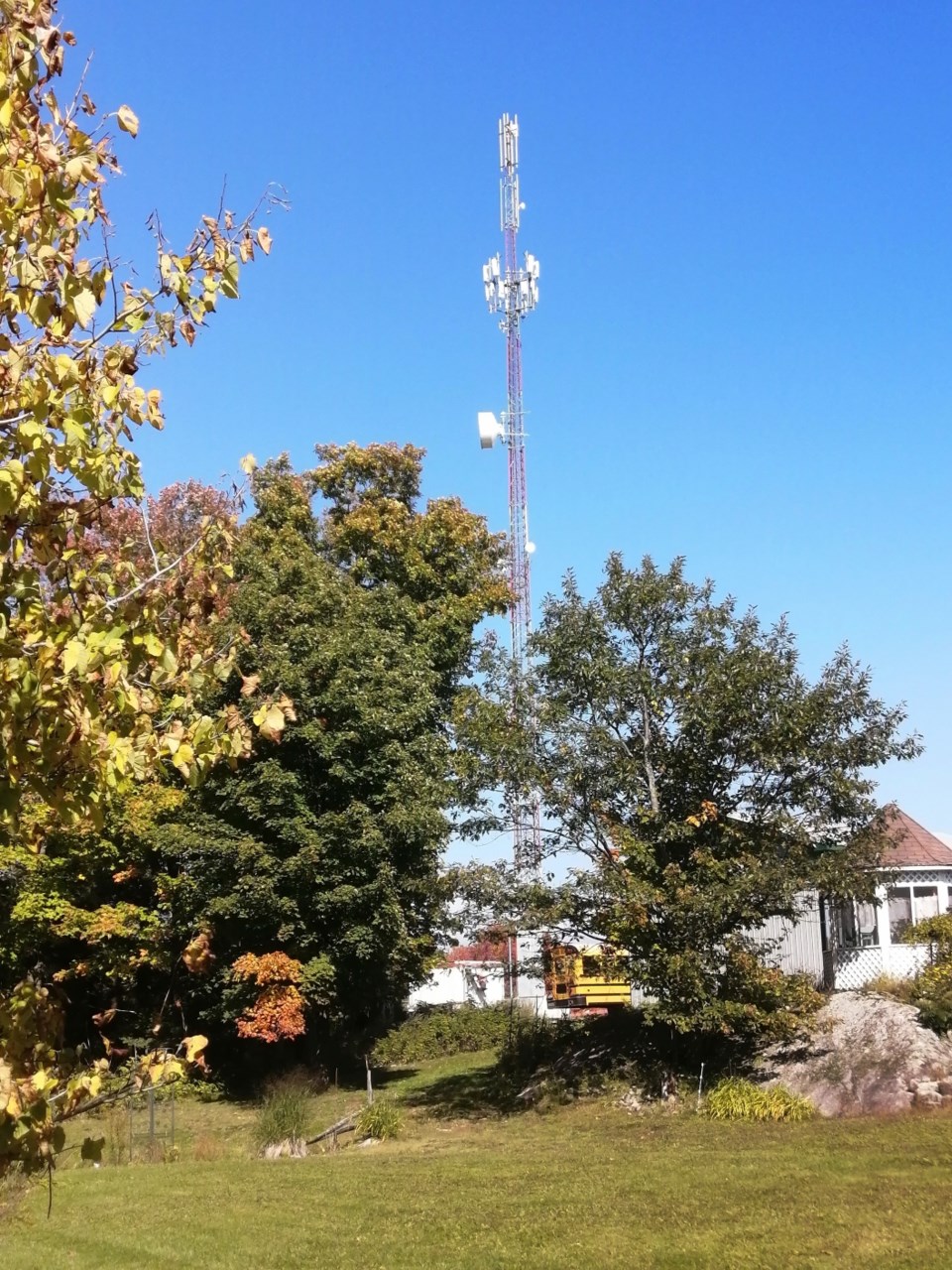East Ferris residents and businesses near NetSpectrum’s Big Moose Road tower will be the first to benefit from a 2.5-year project to deliver internet service through fibre optic cables.
Jason Bionda, Spectrum Telecom Group’s vice president of broadband networks, presented the plan to East Ferris council Tuesday evening.
“The Big Moose tower is maxed out,” Bionda said during the special meeting of council, explaining they’ll use microwave technology to feed the fibre until direct connections are possible.
Demand during the COVID-19 pandemic, which forces many to work from home and others to spend more time on the internet, gobbled up available frequencies and tower space, he said.
Constantly fighting interference, they’ve had difficulty providing higher speeds on a consistent basis to their 200 Big Moose tower customers.
A recent microwave upgrade at Big Moose allows up to 1.6Gb backhaul and base stations were added to accommodate multiple customers at 25Mb download speeds, he said.
Within that eventual fibre footprint, Bionda said residential packages of up to 50Mbps will be offered for less than $100 with custom solutions for businesses.
Bionda said the pace of the project would accelerate if funding applications provincial and federal governments is approved but they wanted to improve and expand service regardless.
“If we don’t get the funding, this is what we’re doing,” he told council.
“This is great news,” said East Ferris Mayor Pauline Rochefort, noting that NetSpectrum was the first to erect a tower in the community years ago.
NetSpectrum has eight towers in the township and two just outside the boundaries serving about 600 customers, making it the largest wireless broadband internet provider in East Ferris.
Bionda said the fibre optics will allow for 300 customers in the area of Big Moose, Corbeil-Astroville, Ouellete, Lavigne and parts of Quae Quae (ending at the tracks), Waukegan, Birch Hill and Maplecove. About 75 of the existing 200 customers will continue using wireless technology although it will be less congested.
 NetSpectrum is moving forward with a fibre optic plan to offer broadband internet service via its Big Moose Road tower.
NetSpectrum is moving forward with a fibre optic plan to offer broadband internet service via its Big Moose Road tower.
Some of the initial work, such as finding the best locations based on topography and suitable locations for poles, has been done. Bionda said brushing of road allowances and preparation for poles in trenches is already underway, beginning with Ouellette Road.
“We’ll be crossing driveways and roads … everybody will be notified,” he said.
Bionda said they looked at using Bell and Hydro One poles but the fees and charges for upgrading poles made it more economical to use their own system.
Rochefort said the township looked at why services providers were not using the existing infrastructure before hosting the Connectivity conference. She said Hydro One had raised their tariffs to use the poles. An Ontario Energy Board report indicates tariffs were doubled, partly because not enough third-parties were using them. People have said, Rochefort continued, that it’s a shame the once-public entities couldn’t be part of a solution.
“We’ve always thought that was a missed opportunity,” Rochefort said.
Also on the agenda Tuesday for the regular council meeting was a Federation of Northern Ontario Municipalities letter supporting Elon Musk’s Starlink application to the CRTC to provide satellite service. Council will decide if it will endorse that campaign at the next meeting.
Rochefort said she’s heard people debate the potential of the proposal with some noting a New Brunswick company, Xplornet, is planning something similar.
“There are a lot of various considerations, such as, ‘Do we want a Canadian solution’,” she said, adding they’ll leave that up to higher levels of government to decide.
In the meantime, with a $15-million regional proposal seeking funding from the federal and provincial governments to erect towers, expanding capacity on existing towers and run fibre where possible, Rochefort said they support all the initiatives.
